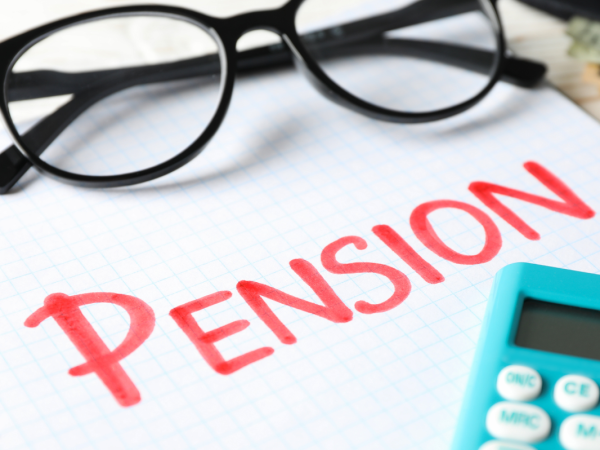How tax is collected on flexible pension payments
If you access your pension pot flexibly, then income tax will usually payable. Here we look at how tax is collected and some problem areas to be aware of.

Content on this page:
Overview
The way tax is collected when you take money from your UK pension can be complicated – particularly so when you are drawing from your pension flexibly. This is because you might be taking one-off or irregular amounts from your pension pot.
It might be the case that only part of your pension payment is taxable, depending on how you choose to use your tax-free cash sum. You can read more about the tax-free lump sum on our page What pension income is tax free?. The following guidance applies only to the part of any payments that are taxable.
In general:
- Money from pensions will be taxed under the Pay As You Earn (PAYE) system.
- You might not pay the right tax at the right time.
- You might get PAYE tax coding notices from HMRC or papers (such as a P45) from your pension provider.
- You might need to claim a tax refund or pay some more tax later.
- HMRC might send you a tax calculation or self assessment tax return.
Below we explain these things in a bit more detail.
PAYE on flexible payments
Tax is deducted at source using the PAYE system. If you are or have been an employee, you may recognise this as similar to the way employers deal with tax on wages or salary. When applied to pension payments, the PAYE system deducts only income tax – National Insurance contributions are not payable on pension payments.
The first time you take a pension payment, the pension provider will probably not know anything about your situation and so may use a PAYE tax code to work out the tax – often this will be on an ‘emergency’ basis (more on this below or for general information on emergency tax codes see our page Special PAYE codes). This doesn't take into account any other income you might have in the current tax year. It simply assumes you will receive the exact same payment each month and applies 1/12th of the personal allowance, basic rate and higher rate tax bands against the payment, with anything above this attracting additional rate tax. In 2024/25, this tax code will look like this: 1257L M1.
Alternatively, if you give your pension provider a P45 for the tax year when you access your pension, they will instead be able to use the tax code number from your P45. You should have a P45 from a previous employer if you have stopped work, or perhaps from another pension provider if you have already taken money out of another pension pot in full. A P45 shows how much you have earned and how much tax you have paid since 6 April, and what code number your employer has been using.
How emergency codes work
When a pension provider who usually pays monthly operates an emergency code, this will usually be on a ‘month 1’ basis. This means they:
- take off £1,048 from the payment – this is not taxed, being 1/12 of the standard personal allowance (£12,570 in 2024/25)
- tax the next £3,142 at 20%, this being 1/12 of the basic rate tax band (1/12 of £37,700 in 2024/25)
- tax the next £7,287 at 40%, this being 1/12 of the higher rate tax band (1/12 of £87,440 in 2024/25)
- Any remaining amount (that is, above £11,477), they will tax at 45%.
If you live in Scotland and are a Scottish taxpayer, different income tax rates and bands apply to your pension income, but the same principles apply. There is more information in our section on Scottish income tax. From 6 April 2019, a Welsh income tax has been introduced. However, for tax years up to at least 2024/25, there is no effect on the amount that Welsh taxpayers will pay.
If the pension provider pays weekly, they will use a ’week 1’ basis. In 2024/25 this looks like 1257L W1. This means the yearly figures would be divided by 52 and would mean even more tax was deducted. However, most are likely to use a monthly calculation.
An example may help to explain:
Claiming a refund
Because of the emergency tax code situation explained above, overpayments are common. However, there are various options for claiming overpaid tax on a flexible pension payment. The best method depends on whether you have:
- Taken all of your money out of a pension pot; or
- Taken part of your money out of a pension pot
If you are within self assessment, you can reconcile your position through that – see our guidance at the end of this page. If you would prefer to claim an interim refund, or you are not in self assessment and pay all your tax under PAYE, read on.
If you take all of your money out of a pension pot
After the final amount is paid from your pension pot, your pension provider should provide you with a P45 showing details of the payment, which you may have to send to HMRC when you claim a repayment.
To claim your repayment, you will need to complete one of the following forms, depending on your circumstances:
- If you retire and have no other income or just receive your state pension, use form P50.
- If you take all your money out of your pension pot and you have no other income, use form P50Z.
- If you take all your money out of your pension pot and have other PAYE income, use form P53Z. Note that if you have taken a pension lump sum under the small pots rules, form P53 is required, which is different to the P53Z.
- If you are not able to apply online or to download and print the forms yourself, telephone HMRC for printed copies.
Note - the above are the forms to use to claim back tax during the tax year if you have taken everything out of a pension pot. For instance, you had £20,000 with XYZ Mutual and have taken all of the money and tax has been taken under PAYE. There is nothing left with XYZ Mutual (though you might still have another pension pot – say, £10,000 with ABC Investments – that you have not touched; that does not matter).
If you have taken only part of your money out of a pension pot
Tax overpayments (and underpayments) will be dealt with under the normal PAYE rules – that is, they will be corrected by the issue of a proper tax code by HMRC, which will apply to any subsequent payments.
This means that if you are taking regular payments or perhaps a series of irregular payments out of a pension pot, you may be refunded part of overpaid tax next time you take a payment if it is within the same tax year.
If you take only part of your money out of a pension pot, and you will not take another cash payment from the pension pot before the end of the tax year, you can claim a tax refund (if appropriate) using form P55.
If you do not, or are not allowed, to claim a tax refund during the year
If you do not make a claim during the tax year, HMRC should look at all of your PAYE records after the end of the tax year. If you have not paid the correct tax, HMRC will automatically send you a P800 calculation if you are due a refund (this might be called a simple assessment if you owe tax).
The P800 process should pick up on overpayments that have not been claimed within the tax year. But if the system fails, you may not hear from HMRC or you may get a P800 calculation that is incorrect, so you need to try to understand your situation for yourself and not rely solely on HMRC putting your affairs in order.
Contact HMRC if you think you are owed tax back on a pension payment but have not received a calculation from them.
If you have taken a defined benefit ‘trivial commutation’ (final salary pensions)
See our separate guidance on trivial commutations in our page Small pensions.
Self assessment tax returns
If you usually complete a self assessment tax return, you will have to include the taxable element of your pension payment on the return. If you have claimed an in-year refund of part of the tax deducted under PAYE, using one of the forms mentioned above, you will also need to include details of the refund on the return.
If money you take from your pension means you have extra tax to pay or takes your total income over certain limits, you might be obliged to fill in a tax return even if you have not had to complete one in the past. See our guidance on whether you need to fill in a self assessment tax return.



